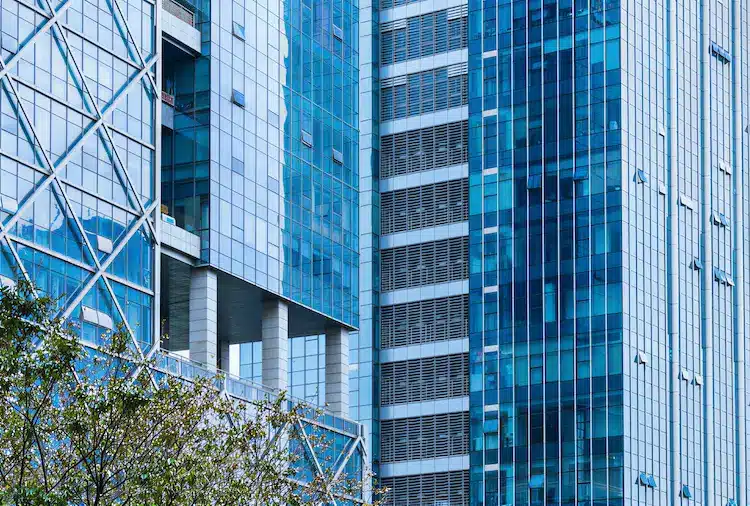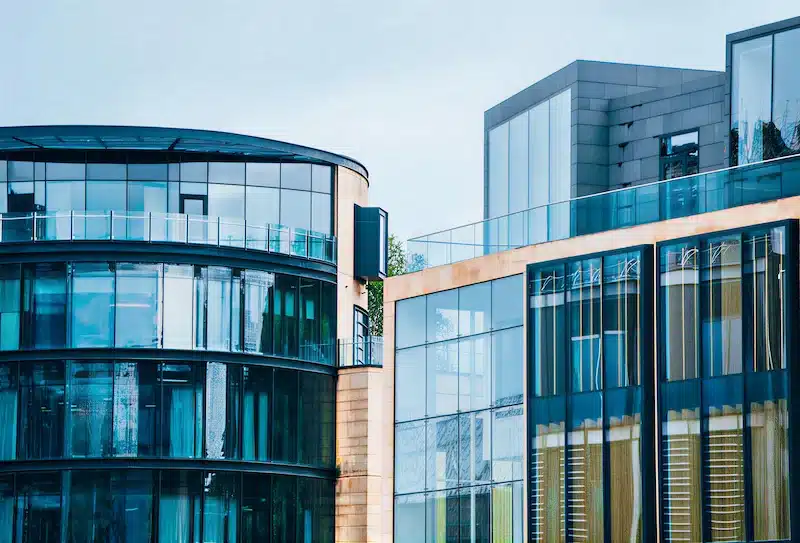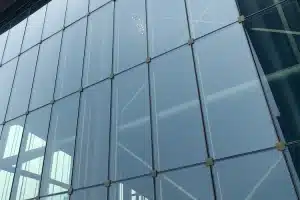
Smart Façades: AI-Driven Facade Design and Installation
Smart Façades: AI-Driven Facade Design & Installation —Insights from SunFrame Projects Introduction As curtain walls grow more complex, AI is emerging as a transformative tool

In modern architecture, curtain walls have moved beyond decoration — they respond to the space within. It’s the building’s spatial needs that shape how transparent, efficient, and expressive the façade becomes.
Across its global projects, SunFrame has demonstrated how understanding spatial utilization can lead to more precise and responsive façade design — where engineering, aesthetics, and comfort converge.
Every building’s façade begins with one question: What kind of space do we want to create?
These spatial intentions can be grouped into three fundamental dimensions:
Spatial Focus | Core Considerations | Impact on Façade Design |
Functional Space | Work, living, retail, hospitality | Determines opening ratios, operable units, daylight access |
Psychological & Visual Space | Openness, connection, comfort | Influences glass transparency, frame visibility, and structural rhythm |
Environmental & Energy Comfort | Heat load, daylight control, acoustics | Guides glazing type, Low-E coatings, shading systems, and structural depth |
When responding to these three needs, façade systems let architects and engineers turn the building envelope into a tool for light, energy, and spatial experience.

Office façades often balance openness, brightness, and thermal comfort — supporting both productivity and architectural expression.
System: Stick System Glass Curtain Wall
Spatial Goal: Maximize daylight and visual connectivity
Design Approach: Slim mullion-free framing with a semi-curved skylight
Result: Clean transparency, even daylight distribution, and enhanced spatial depth
System: Exposed Frame Curtain Wall
Spatial Goal: Achieve open interiors with efficient assembly
Design Approach: Unitized modular units with custom aluminum profiles
Result: Quick installation, improved thermal comfort under tropical climate
Office façades emphasize clarity, transparency, and energy performance, often realized through unitized or stick systems that merge efficiency with aesthetic precision.
Residential spaces need a delicate balance between openness and privacy, light and comfort.
System: Unitized Curtain Wall System
Spatial Goal: Capture city views while preserving privacy
Design Approach: Integrated aluminum railing system within curtain wall alignment
Result: Continuous visual flow, improved acoustic insulation, and thermal comfort
System: Window Wall & GRC Hybrid
Spatial Goal: Connect interiors with light and landscape
Design Approach: Modular window walls embedded into sculptural GRC elements
Result: A dialogue between mass and transparency — luxury living defined by light
Residential façades are about human comfort and spatial poetry. Here, unitized and hybrid systems create spaces that are bright yet private, matching the natural flow of daily life.
In malls and hotels, façades set the tone, shaping impressions before anyone even walks through the door. They must deliver both visual impact and environmental comfort.
System: Unitized Curtain Wall + Aluminum Windows
Spatial Goal: Create openness and visual attraction
Design Approach: Prefabricated high-performance units for clean transparency
Result: Enhanced daylight penetration with improved energy efficiency
System: Unitized Curtain Wall with Hidden Frame (GL-50)
Spatial Goal: Express luxury through visual coherence and comfort
Design Approach: Invisible-frame units with optimized glazing performance
Result: Sleek aesthetics, balanced thermal control, and seamless spatial flow
Commercial and hospitality façades focus on drama, unity, and comfort through concealed-frame or modular systems that shape fluid, immersive environments.
The connection between space and façade technology is mutual — each defines and refines the other.
Offices lean toward high transparency; residences and hotels require a subtler balance between openness and seclusion.
Commercial projects tend to use standardized unitized systems for efficiency.
In contrast, high-end residential and hospitality designs emphasize custom details that shape character and mood.
Low-E glass, insulated profiles, and integrated shading serve not only performance metrics but also experiential quality.
Unitized modules minimize site disruption and optimize usable space.
Curved or semi-concealed façades extend interior perception, enhancing spatial depth.

Through SunFrame’s global project experience, one thing is clear:
More than a protective layer, a curtain wall defines how people perceive and experience a space.
Through engineering and artistry, SunFrame continues to redefine façades as instruments of light, energy, and experience.

Smart Façades: AI-Driven Facade Design & Installation —Insights from SunFrame Projects Introduction As curtain walls grow more complex, AI is emerging as a transformative tool

SunFrame’s Global Journey: From “Made in China” to “Created in China” Introduction For decades, China’s doors, windows, and curtain wall industry has stood as a

Beyond Glazing: Designing for Solar Control in Airport Facades In airport design, managing sunlight is never just about choosing the right glass — it’s a design

Seismic Curtain Wall: 9 Acceptance Standards for Flexible Connectors Introduction In Mexico City, an ordinary morning can be transformed within seconds. The ground begins to